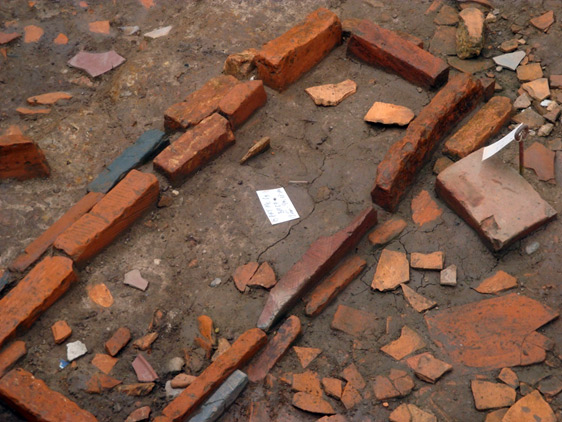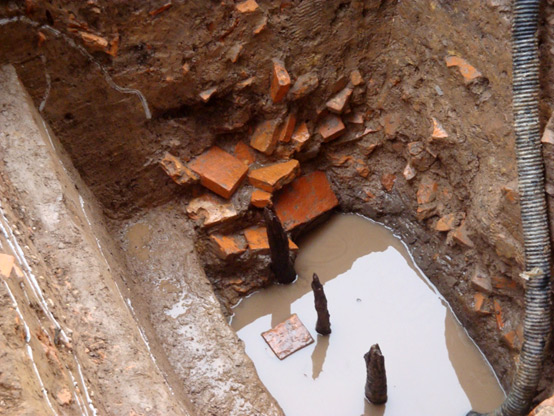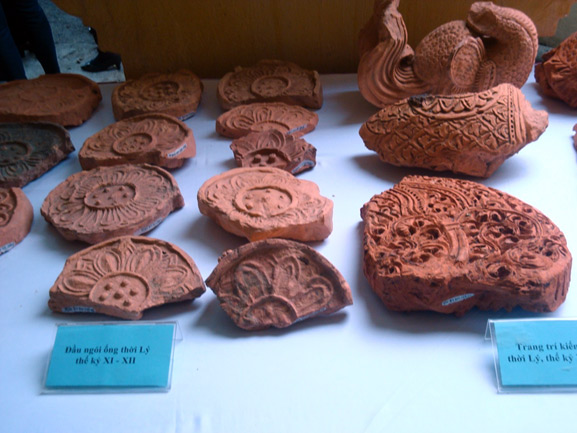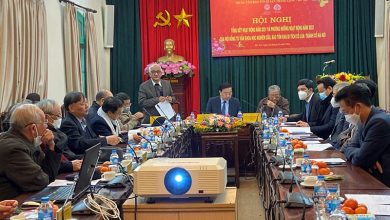Workshop on the initial results of the excavations conducted in the area of the Kính Thiên Palace in 2015
On the morning of 14 December 2015, at the Thăng Long Imperial Citadel, the Thăng Long – Hà Nội Heritage Conservation Centre and Vietnam Institute of Archaeology jointly conducted a workshop to report on the initial results of the excavations conducted in the area of the Kính Thiên Palace in 2015.
As part of a long-term plan of excavation at the Thăng Long Imperial Citadel heritage site for an intended restoration of the Kính Thiên Palace space and in an effort to fulfill commitments made to UNESCO regarding the expansion of archaeological studies to clarify the Outstanding Universal Value of the site, the Thăng Long – Hà Nội Heritage Conservation Centre and the Vietnam Institute of Archaeology have jointly conducted an excavation in the north of the Đoan Môn (Main Gate), on a total area of nearly 1000 m2, covering three pits H1, H2 and H3.
The excavated pits have revealed a density of cultural layers and diverse archaeological vestiges overlapping one another and spanning more than 10 centuries. At some sections, the excavation was conducted up to five metres below the ground surface.
According to Assoc. Prof. Tống Trung Tín, the results of this year’s excavation have shed more light on the space of the Dragon Courtyard of the Early Lê and Restored Lê periods discovered several years ago, identifying with more certainty the section of the structure in the southwestern corner of the Kính Thiên Palace, which consisted of a grand courtyard, encircling walls, and corridor structure dating back to the Early Lê and Restored Lê periods (15th to 18th centuries). Particularly, they have better clarified the vestiges of a massive water channel of the Lý dynasty that extended towards the Đoan Môn (Main Gate). From east to west, the water channel measures about 83 metres in length, while in the north-south direction, it measures about 72 metres. Trần-dynasty vestiges of flower basins and structures decorated with lemon flowers have also been found.
Given these excavation results, Prof. Phan Huy Lê proposed to start synthesizing the archaeological excavation work that has been conducted at the Central Sector of the Imperial Citadel of Thăng Long (Vườn Hồng, Kính Thiên- Đoan Môn) over the past 5 years (2011- 2015) in order to set new goals for the upcoming period; besides, there also needs to be a comprehensive and long-term archaeological plan with specific objectives and priority should be given to archaeological excavation to fufill the project for the restoration of the space of Kính Thiên Palace. The results of the excavation must be conserved and promoted to serve the community and the sightseeing public.
Excavations conducted from 2011 to date in the areas of Kính Thiên – Đoan Môn (part of the Thăng Long Forbidden Citadel) have brought about major breakthroughs in the study of the remnants of Thăng Long as the national capital city. The Vườn Hồng area, the 18 Hoàng Diệu site and the Kính Thiên Palace area, all feature a stratified structure with highly unified cultural layers ranging from the Đại La to the Đinh – Anterior Lê, the Lý, Trần, Early Lê, Mạc, Restored Lê and Nguyễn periods. The relics of these periods are densely populated, interlocking and overlapping one another. The layout, structure and archaeological plans as well as the construction materials and techniques were constantly evolving and alternating.
Some photos of the workshop on excavation results in 2015
Participants at the workshop visiting the excavation site
Vestiges of a flower basin of the Trần dynasty
Vestiges of a major water channel of the Lý dynasty
Artifacts unearthed in this year’s excavation
Kim Yến
Thăng Long – Hà Nội Heritage Conservation Centre











